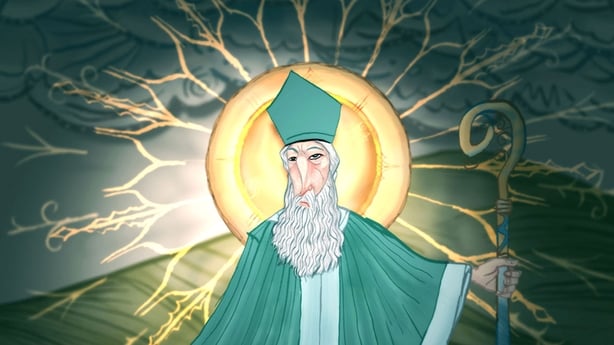St. Patrick is one of the most celebrated figures in Irish history, but his story remains shrouded in myth and legend.
While that legend has been shaped by centuries of storytelling, his real-life contributions to Ireland’s religious and cultural history remain profound.
Ahead of a major new documentary on RTÉ One this St. Patrick's Day, here are ten surprising facts that reveal the real impact of Ireland's patron saint...
Patrick Wasn’t the First Christian Missionary in Ireland
Before Patrick, Irish Christianity had already been introduced by figures like St. Declán of Waterford and the French Bishop Palladius. However, 7th-century writers Muirchú and Tírechán mythologized Patrick’s role, securing his place as Ireland’s patron saint.
His Legacy Is Built on Literacy
Patrick’s influence endures largely due to his writings. His Confessio and Letter to the Soldiers of Coroticus are the oldest surviving texts from 5th-century Ireland and provide crucial insight into his life and mission.

Patrick Was Likely a Slave Owner
Captured and enslaved as a boy, Patrick eventually escaped and returned to Ireland as a missionary. However, as a member of a wealthy Romano-British family, he may have once owned slaves himself—a controversial aspect of his history.
Many Places Claim Patrick, But He Named None
From Armagh to Croagh Patrick, many sites in Ireland are linked to him. However, Patrick never mentions them in his Confessio, suggesting these connections were made later to boost local significance.
Patrick Thought His Mission Had Failed
Toward the end of his life, Patrick believed he had not succeeded in converting the Irish. Ironically, his legacy would shape Ireland’s identity for centuries.
He Was Accused of Corruption
Patrick’s Confessio was, in part, a defense against accusations of financial misconduct, which he vehemently denied.
Ireland’s Conversion Was Peaceful and Unique
Unlike in many other regions, Ireland’s shift to Christianity was achieved through persuasion rather than violence—a rare occurrence in global history.
Patrick Adopted Pre-Christian Traditions
Christianity didn’t erase Ireland’s pre-Christian beliefs entirely. Patrick embraced aspects of Irish tradition, such as sacred wells, and the shamrock may have pre-Christian Triskelion roots—though there’s no proof he actually used it to explain the Trinity.

The Snake Myth Has No Basis in Reality
There is no archaeological or historical evidence that Patrick drove snakes out of Ireland. The island had likely been snake-free since the Ice Age.
His Mission Was Linked to Prophecy
Patrick and his followers were motivated by a belief that Christ would return once his message had reached the ends of the Earth. This belief drove their extreme monastic practices in Ireland’s most remote places, such as Skellig Michael.
Patrick - A Slave to Ireland, RTÉ One, St. Patrick's Day at 7pm - catch up afterwards via RTÉ Player

